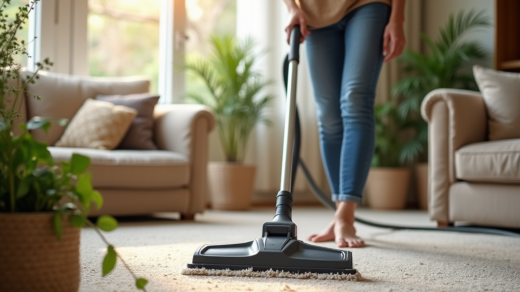Maintaining a clean home can feel like a never-ending chore, but with the right whole-house cleaning schedule, it becomes manageable and less overwhelming. This article will guide you through creating a cleaning schedule that you’ll actually stick to, ensuring every part of your home gets the attention it needs without consuming all your free time.
1. Assess Your Cleaning Needs

Before diving into a cleaning schedule, it’s critical to assess your cleaning needs. Every home is different, and your schedule should reflect your specific requirements. Start by listing out all the rooms and areas in your home that need regular cleaning. Take note of high-traffic areas that might need more frequent attention. By evaluating your home’s unique needs, you’ll be able to create a tailored cleaning schedule that is both realistic and effective. Additionally, consider any specific tasks like deep cleaning carpets or decluttering closets that might need to occur less frequently.
2. Break Tasks into Manageable Chunks
The key to sticking to a cleaning schedule is to break down overwhelming tasks into smaller, manageable chunks. Instead of setting aside an entire day for cleaning, which can be daunting, allocate specific tasks to different days of the week. For example, you might vacuum on Mondays, dust on Tuesdays, and mop on Wednesdays. This approach not only makes the workload lighter but also instills a routine that’s easy to follow. Smaller tasks are less intimidating and can easily fit into your daily schedule without consuming all your free time.
3. Create a Weekly Cleaning Schedule
Drafting a weekly schedule ensures you cover every essential area of your home on a regular basis. Here’s an example:
-
Monday:
Vacuum all carpets and sweep floors. -
Tuesday:
Dust all surfaces, including shelves and electronics. -
Wednesday:
Clean bathrooms (toilets, sinks, and mirrors). -
Thursday:
Mop floors and clean kitchen surfaces. -
Friday:
Laundry day (wash, dry, fold, and put away clothes). -
Saturday:
Tidy up living spaces and bedrooms. -
Sunday:
Rest day or catch-up on any missed tasks.
Adopting a structured weekly schedule helps maintain order and keeps your home consistently clean. Remember to be flexible and adjust the schedule as necessary to fit your lifestyle.
4. Involve the Whole Family
Cleaning should not be a solo endeavor. Involving the entire family in the cleaning process not only distributes the workload but also teaches responsibility and teamwork. Assign age-appropriate tasks to each family member. For instance, kids can help with tidying up toys, while teenagers can handle vacuuming or mopping. Establishing a family cleaning routine ensures that everyone contributes to maintaining the household, making the schedule more sustainable in the long run. Also, create fun incentives or rewards for completing chores, which can make the process more enjoyable.
5. Use Tools and Products Wisely
The right tools and products can make a significant difference in cleaning efficiency and effectiveness. Invest in quality cleaning supplies that are suited to your specific needs, such as microfiber cloths, a reliable vacuum, and eco-friendly cleaning solutions. Knowing which products to use on different surfaces can prevent damage and prolong the life of your furniture and appliances. Additionally, consider organizing your cleaning supplies in a caddy or cart that’s easy to move from room to room. This organization can save you time and effort, ensuring you have everything you need at your fingertips.
Conclusion
A whole-house cleaning schedule doesn’t have to be a source of stress. By assessing your cleaning needs, breaking tasks into manageable chunks, creating a weekly schedule, involving the whole family, and using tools and products wisely, you can maintain a clean and organized home effortlessly. Stick to your personalized plan and adjust as needed, and you’ll find that keeping your home spotless can be both achievable and sustainable.
FAQs
1. How often should I deep clean my home?
Deep cleaning your home should ideally be done once every 3-6 months. This can include tasks like carpet cleaning, window washing, and decluttering spaces.
2. What’s the best way to motivate kids to help with cleaning?
Incorporate fun incentives or rewards for completing chores. Creating a chore chart and setting achievable goals can also encourage children to participate actively.
3. How can I make my cleaning schedule more flexible?
Allow some buffer time each week for missed tasks or unexpected events. Don’t be too rigid with your schedule; it’s meant to guide you, not stress you out.
4. What are the essential cleaning supplies I should always have?
Basics include a good vacuum cleaner, microfiber cloths, multi-surface cleaner, mop and bucket, scrub brushes, and eco-friendly cleaning solutions.
5. Can a cleaning service replace my need for a cleaning schedule?
While hiring a cleaning service can reduce your workload, having a cleaning schedule ensures daily maintenance and keeps your home organized between professional cleanings.


